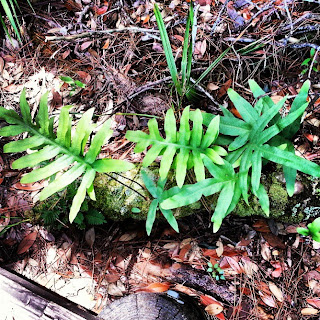Welcome to the Eco-Freakos Bloggers page!!! Here, you can read our thoughts on various activities and discussions that happens within FGCU's Colloquium course. The experiences and thoughts of each and every group member featuring, Mike Dreznin, Marnie Heenan, Bianca Johnson and Mical Robinson will be shared throughout this blog. Enjoy the content of our experiences!!!!
Monday, May 27, 2013
Mical's Thoughts On The Field Trip To Calusa Nature Center:
This week we went to the Calusa Nature Center and learned about the different type of plants that are grown there and their history in the world today. For the first time in my life I have seen what poison ivy looks. Now I am able to tell the difference between poison and other plants. Poison Ivy has little red tips on it and releases a toxin, if it comes in contact with skin the you start to breakout in a rash. You can also breath in the poison ivy if you set it on fire, releasing the toxin into the air.
Bianca's Thoughts On Class & The Field Trip To Calusa Nature Center:
I really enjoyed class this week. Our discussions were filled with useful information, however I didn’t like that most of the responses were redundant and a lot of class time was spent on listening to students explain one thing in particular. The field trip to the Calusa Nature Center was interesting and surprisingly I really enjoyed myself. My favorite part of the trip was watching the guy feed the alligators. I also enjoyed looking at all the cool animals that they had upstairs such as the owls, snakes, and the turtles. My favorite animal I must say was Elvis the pig. I didn’t really enjoy the trail walk, which I put most of the blame on the heat. I did however; learn that poison ivy has three leaves coming out from a central point. Before that trip, I never knew how to identify poison ivy, and now I do. I also learned that the Virginia creeper is in the same family as poison ivy, but it actually relieves the symptoms of poison ivy.
I really enjoyed class this week. Our discussions were filled with useful information, however I didn’t like that most of the responses were redundant and a lot of class time was spent on listening to students explain one thing in particular. The field trip to the Calusa Nature Center was interesting and surprisingly I really enjoyed myself. My favorite part of the trip was watching the guy feed the alligators. I also enjoyed looking at all the cool animals that they had upstairs such as the owls, snakes, and the turtles. My favorite animal I must say was Elvis the pig. I didn’t really enjoy the trail walk, which I put most of the blame on the heat. I did however; learn that poison ivy has three leaves coming out from a central point. Before that trip, I never knew how to identify poison ivy, and now I do. I also learned that the Virginia creeper is in the same family as poison ivy, but it actually relieves the symptoms of poison ivy.
Marnie's Thoughts About The Field Trip To Calusa Nature Center:
At the Calusa Nature Center I learned a lot about the plants native to Fort Myers. I really liked the trail, but my favorite part was watching the alligators being fed. I didn't know that the Saw Palm was named because of the barbs on its fronds. I also learned that Alligator Flags are called that because alligators like the areas where they grow.
At the Calusa Nature Center I learned a lot about the plants native to Fort Myers. I really liked the trail, but my favorite part was watching the alligators being fed. I didn't know that the Saw Palm was named because of the barbs on its fronds. I also learned that Alligator Flags are called that because alligators like the areas where they grow.
Sunday, May 19, 2013
This past week our Colloquium class took a field trip to FGCU's Food Forest. You can see the pictures taken by Marnie on our blog of the different types of plants grown at the food forest. There were a couple of things that we learned from the food forests president, Arlo Simonds. Marnie learned the Moringa tree can grow 12 feet in one year while Bianca learned that the mimosa plant fixes nitrogen into the soil. She also discovered that the Spanish needle has twice the nutrients of spinach and it's medicinal if you roll it up and rub it on your skin for bug bits. There are 6 butterfly species that rely on this plant for a food source. Mical learned you can put cardboard on top of weeds and water it down so it gets heavy and breakdown more easily to kill weeds. We all took some Chaya and was told by Arlo on how we could boil it for about 20 minutes and add our own spices eat it. Chaya is actually one of the most healthy plants on the planet that a human can consume.
Subscribe to:
Comments (Atom)

























